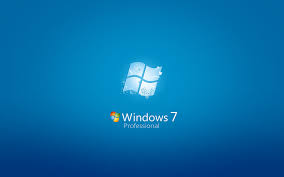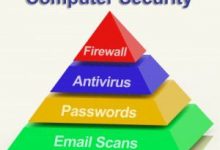What are the Input and Output Devices of Computer?
Input and Output Devices of Computer help us very much to get the fruitful effects in our daily life. the hardware used to enter data and instructions by the user is known as the input device i.e., keyboard, mouse, scanner, etc. while the output device is any hardware component that can convey information to one or more codes. some output devices are speakers, headphones, projectors, plotters, etc.
What are Input and Output Devices?
of Computer help us very much to get the fruitful effects. the hardware used to enter data and instructions by the user is known as the input device i.e., keyboard, mouse, scanner, etc. while the output device is any hardware component that can convey information to one or more codes. some output devices are speakers, headphones, projectors, plotters, etc.
What are Input Devices?
the input devices are the physical equipment that is used to read or translate data consisting of alphabets, numbers, or other symbols into electronic impulses. which can be understood by the computer.
What is the major function of input and output devices?
Functions Of Input Devices
The major function of input devices is to:
- Pass information into the memory unit of the CPU
- Convert the characters (letters, numbers, and other symbols) into binary patterns, which can be held inside the computer memory.
Purpose of Input Devices
the purpose of input devices is to pass information to the memory unit of the CPU and convert the characters (letters, numbers, and other symbols) into binary patterns, which can be held inside the computer memory.
Types of Input Devices
there are the following types of input devices.
- keyboard
- mouse
- trackball
- scanner
- joystick
- light pan microphone
- digital camera
KEYBOARD
A keyboard is the primary text input device. It consists of a set of keys for computer input. It resembles the mechanical and electronic typewriter but with the addition of a few extra keys for computer commands. The standard arrangement of alphabet keys is known as the QWERTY keyboard.
Working:
hitting on a key sends an electrical signal to the microprocessor. A standard keyboard includes about 100 keys and each key sends a different signal to the CPU.
Divisions of Keyboard
All the keys are arranged in the following keypad divisions.
- Alphanumeric keypad
- Numeric
- Function kens.
- Screen Navigation or cursor movement keys
- Modifier keys
- Other keys
Alphanumeric keypad
it is the part of the keyboard that looks like a typewriter. the arrangement of the keys for this part is similar to the pattern of the typewriter.
Special Keys
along with these keys, this part of the keyboard also has some special keys for specific functions.
(I) Backspace key
The backspace key is used to delete the character.
(ii) Caps Lock Key
this key lets you lock the alphabetic keys to produce only capital letters.
(iii) Enter key
Enter key issues a command to the processor to perform an action on it or place a new line if you are typing a document, etc.
Numeric Keyboard
it is usually placed on the right-hand side of the keyboard that looks like a simple calculator. it includes the following keys.
- number keys from 0 to 9 digits.
- the four basic operators (+, -, *, \).
- num lock key that works similarly to the cap lock key, to force the numeric keys to input numbers. when the num lock key is deactivated, the numeric keypad’s key performs cursor movement control functions.
Function Keys
these keys are usually arranged on the top of the keyboard in a row with numbers marked on them from 1 to 12 (F1 to F12). all of these keys have pre-defined instructions which are different for different software; e.g. in GWBASIC.
| F1 | LIST | to display the program |
| F2 | RUN | to execute the program |
| F3 | LOAD | to load the program from the disk |
| F4 | SAVE | to save a program from RAM to disk |
| F5 | CONT | to continue the program after stopping the command |
| F6 | LPTI | to send output to the printer |
| F7 | TR ON | to display line numbers when the program runs |
| F8 | TR OFF | to shut off the TR ON feature |
| F9 | KEY | used for different functions |
| F10 | SCREEN 0.0.0 | to change the screen with the default setting |
| F11 | Not to be used in Gw BASIC | |
| F12 | Not to be used in Gw BASIC |
Purpose
these keys are used to input commands without typing the long commands or to activate different menus or dialog boxes. each function key has its own specific task depending on the program you are using. for example, the F1 key is a help key in most of the programs which activates special windows that shows information about that program.
Screen Navigation or Cursor Movement keys
Cursor
A blinking mark on the computer screen is called the cursor. where the key you press will display a particular character/digit/special character. The cursor appears in different shapes in various programs, a solid small box. a vertical line, etc.
Cursor Keys
Cursor Control keys ate used to move the cursor around the screen. Most keyboard includes the following Cursor movement keys:
Arrow keys: There are tour arrow keys: left arrow key, right arrow key, up arrow key, and down arrow key. These are used to move the cursor in one place left, right, up, or down.
Home and End keys: The home key move the cursor to the beginning of the line on which the cursor is present. The end key moves the cursor to the end of the line.
Page up and Page Down: These keys are used to make the cursor jump page by page. Page Up key is used to move the cursor to the previous page/screen and Page Down moves the cursor to the next page.
Modifier Keys: Shift, Ctrl, and Alt are modifier keys. These keys are used to modify the input of other keys. Another key is pressed while holding down the modifier keys. For example
Ctrl + C = to Copy
Ctrl + V = to Paste
Ctrl + B = to Bold
Shift + Arrow key = To select
Other Keys
In addition to these groups of keys, there are some other keys present on most of the keyboards. For example,
Delete Key
This key is also used to delete a character.
Insert Key
As the name implies. this key inserts some new text between the texts already typed in. When this key is deactivated. whatever you will type, the text will replace (overwrite) the previously written text.
Esc Key
The function of this key varies from program to program.
Print Screen key
this key allows the user to capture whatever is shown on the screen as an image. The image. then be printed, pasted, or manipulated in different ways.
Pointing Input Device
A pointing input device is a device that is used to move a pointer on the computer screen in order to place it on a display screen and to select one or more actions to be taken from that position.
Examples
- Mouse
- Trackball
- Joystick
- Light pen
MOUSE
The mouse is also a primary input device but it lacks the ability to easily transmit textual information. It is also known as a pointing device because it is used to move a pointer on the computer screen in order to point to a place on a display screen or to select actions to be taken. Today mouse is an internal part of the Graphical User Interface (GUI) of any personal computer.
Parts of a mouse
A mouse consists of the following parts.
Plastic casing
A mouse consists of a metal or plastic housing or casing.
Ball
There is a ball at its base which is rolled on a flat horizontal surface.
Buttons
There are one or more buttons on the top of the casing. The most conventional kind of mouse has two buttons on top, the left one is used most frequently.
Cable
There is a cable that connects the mouse to the computer. This cable looks like a mouse•s tail but you may find a wireless mouse. having no tail to connect with the computer.
Working
As the ball is moved over the surface in any direction, a sensor sends impulses to the computer that causes a mouse-responsive program to reposition the cursor on the display screen.
TRACKBALL
Working: A trackball is used by rolling the ball ith your palm or fingers in the direction you want the pointer to go. There are usually one to three buttons next to the ball ‘Shicll are used just like mouse buttons.
Advantage of trackball over a mouse
- The advantage of trackballs over mice is that the trackball is stationary so it does not require much space to use it.
- A trackball can be placed on any type of surface. For both these reasons popular among heavy computer users: some claim that
- They cause less strain on the hands and wrists than a regular mouse.
Joystick
The joystick is a handheld stick that is used as a pointing device, It is just like a vertical handle that is gripped by hands. It usually has one or moves push buttons for shooting, jumping, etc. These buttons are called triggers.
Purpose
- Joysticks are used mostly for computers or video games.
- They are occasionally used for CAD/CAM systems and other applications.
Light Pen
A light pen is a pointing input device that contains a photodetector or light source. and that allows interaction with a computer through a specially designed monitor/ display screen.
Parts of the Light pen
A light pen is approximately 3.5 inches long and 0.5 inches in diameter. it has a switch and a cord that connects it to the computer, while some have the switch built into the tip of the pen so that it is activated when the pen is pressed against the screen.
Working
A light pen is similar to a mouse, except that with a light pen you can move the pointer and select objects on the display screen by directly pointing to the objects with the pen.
Uses of Light pen
It is usually used for engineering design.
Scanner
The scanner is an input device that reads images or text and converts the data into digital signals, which can be directly fed and stored on a computer.
Types of scanners on the basis of type of input:
Scanners are classified on the basis of the type of input.
Graphical Scanners
Graphical scanners read photos or other images Into the computer and digitize them. producing bitmapped graphics files.
Text scanners
Text scanners use optical character recognition to read pages of text and produce editable text files.
Bar code scanners
bar code scanners, as used in stores, bar codes into digital information. types of scanners on the basis of working. There are the following types of scanners.
Hand-Held Scanner: A scanner that is held in the hand and passed across the image to be scanned in hand. it is very small in size.
Working
The picture is placed on a flat surface and the scanner is moved downward by hand onto the picture to capture the image. This scanner requires a steady hand to get a clear image.
Flatbed scanner
The flatbed scanner has a flat piece of glass. they are identifiable by their similarity in design to a photocopier machine.
WORKING
The document is put on the glass upside down to scan it. In a flatbed scanner, the document is stationary, and a mechanically operated scanning head Inoves beneath the glass.
MICROPHONE
Microphones are becoming an increasingly important input device to record voice/ speech.
Working: Voice input is used most often where the presentation can benefit from the narration. even if there have a microphone and speaker.
Uses:
- You can make telephone calls from your computer.
- The microphone is also useful to arrange audio conferences through the internet.
DIGITAL CAMERA:
A digital camera is another hand-held portable input device that takes pictures as input.
Working:
The digital camera captures images electronically without the need for film. camera stores the snapshots in its memory then the user can copy them into a computer. These images can be edited. printed or copied in a document, etc.
Advantages:
- The big advantage of digital cameras is that Making photos is both inexpensive and fast because there is no film processing.
- Most digital cameras can store dozen of images at a time.
- Most cameras have the ability to increase their capacity by accepting additional memory.
What are Output Devices?
the output devices are also physical equipment, which translates the outcome of the computations, and related activities carried out in the CPU so that these can be translated by humans.
Purpose of Output Devices
the purpose of the output devices is to convert data and information expressed in electronic impulses into human-understandable such as printed reports.
Names of Output Devices | input and output devices of computer
- Monitors
- Printers
- Plotters
Monitor:
It is a device that displays text and graphics generated by a computer.
Basic Types of Monitors
There are the following two types of monitors.
l. CRT Monitors
2. LCD Monitors
1. CRT Monitors
You May Also Like:




